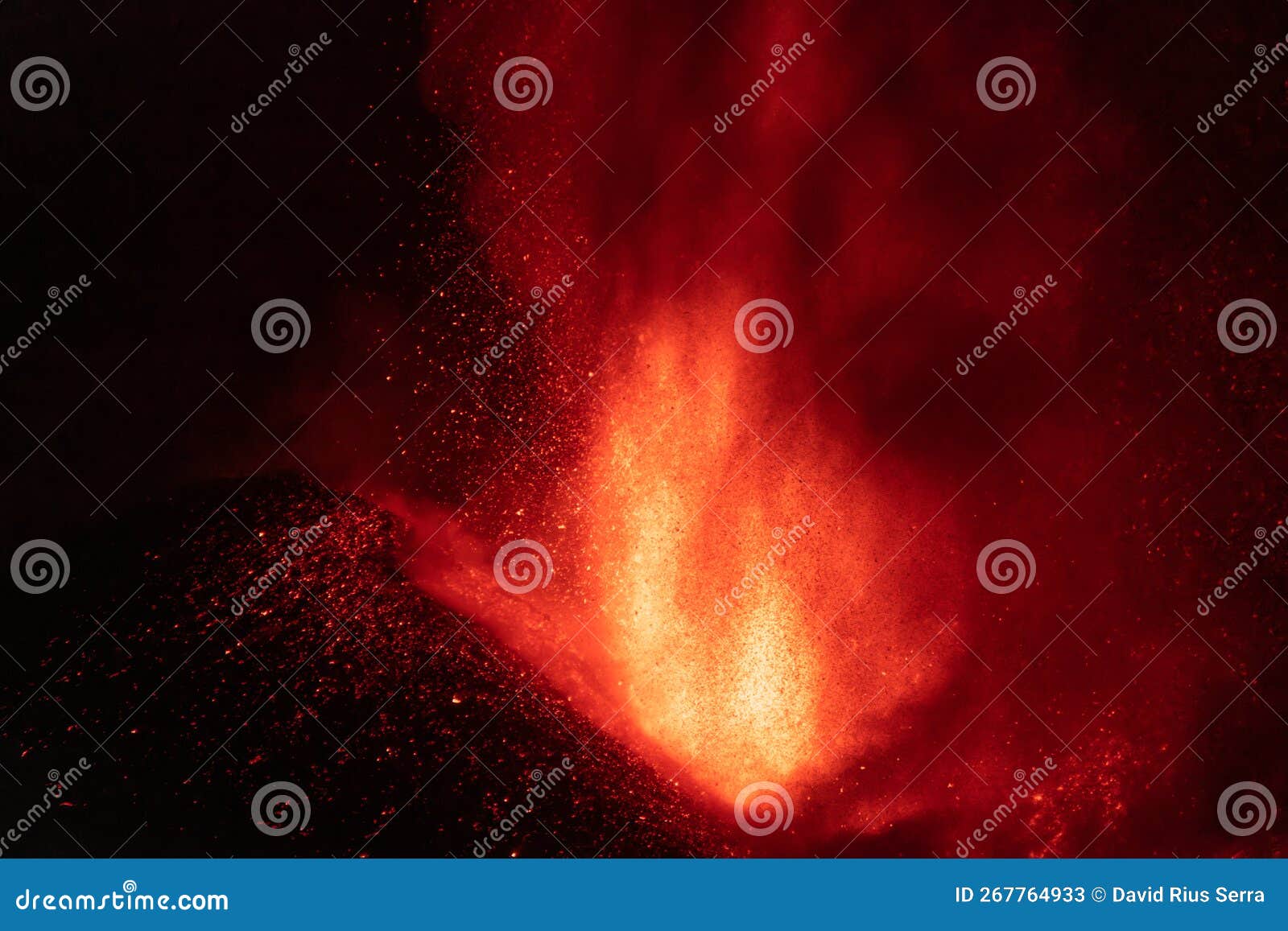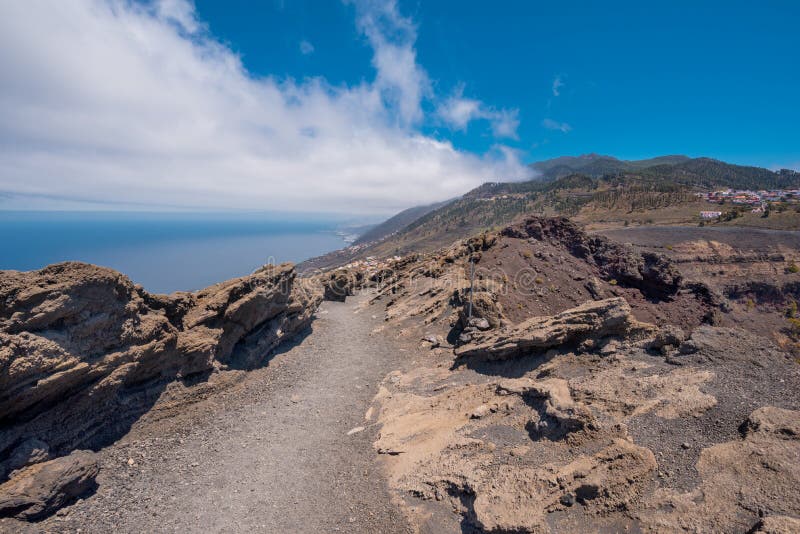**Let’s face it folks, the island La Palma volcano has been making headlines like a rockstar on tour. This isn’t just any ordinary geological event; it’s nature’s way of reminding us who’s in charge. Imagine a mountain spitting fireballs into the sky, rivers of molten rock flowing like a slow-motion apocalypse, and the entire world watching with bated breath. But hey, this isn’t just about destruction—it’s also about the awe-inspiring power of our planet. So buckle up, because we’re diving deep into the heart of the beast.**
When you think about islands, you probably picture pristine beaches, palm trees swaying in the breeze, and cocktails with little umbrellas. But La Palma? That’s a whole different ball game. This Canary Island is home to one of the most active volcanoes on the planet, and its eruptions have turned heads globally. The island La Palma volcano isn’t just a scientific marvel; it’s a testament to the raw, untamed beauty of Earth.
Now, before we dive into the nitty-gritty, let’s talk about why this matters. Volcanoes aren’t just cool to look at—they shape our planet, influence our climate, and even impact our daily lives. Whether you’re a geology buff, a thrill-seeker, or just someone curious about the world around you, the island La Palma volcano has something to teach us all. So, let’s get started, shall we?
Read also:Elisabeth Fritzl After Release A Journey Of Survival And Redemption
Table of Contents
- Introduction to the Island La Palma Volcano
- A Brief History of La Palma’s Volcanic Activity
- Geography and Location of La Palma Island
- The Science Behind Volcanic Eruptions
- Impact on the Local Community
- Environmental Effects of the Eruption
- Tourism and the Volcano
- Safety Measures During an Eruption
- What the Future Holds for La Palma
- Final Thoughts on the Island La Palma Volcano
Introduction to the Island La Palma Volcano
Alright, let’s kick things off with a little backstory. The island La Palma volcano, officially known as Cumbre Vieja, is no stranger to the spotlight. Located on the western edge of La Palma in the Canary Islands, this volcanic ridge has been erupting periodically for centuries. But it’s the recent eruptions that have really put it on the map—or rather, the satellite feeds.
In 2021, the world watched as Cumbre Vieja erupted in spectacular fashion, sending ash clouds soaring into the sky and lava streams carving their way through the landscape. It was like something out of a disaster movie, except this was real life. Scientists scrambled to monitor the situation, while locals were evacuated to safety. And let’s not forget the thousands of tourists who flocked to the island just to witness the spectacle.
But what makes this volcano so special? Well, for starters, it’s one of the most active volcanic systems in the world. Its eruptions are fueled by a massive magma chamber deep beneath the Earth’s crust, and when it decides to blow, it doesn’t mess around. So, whether you’re a science geek or just someone who appreciates the sheer power of nature, the island La Palma volcano has something to offer.
A Brief History of La Palma’s Volcanic Activity
Historical Eruptions
Let’s take a trip down memory lane, shall we? La Palma’s volcanic history is as rich as its landscapes. The island itself was formed by volcanic activity over millions of years, and Cumbre Vieja has been erupting regularly since the 15th century. Some of the most notable eruptions include:
- 1430: The first recorded eruption on La Palma.
- 1585: A major eruption that lasted several months.
- 1949: The eruption that gave Cumbre Vieja its name, creating the famous Jable de Los Hombres lava field.
- 2021: The most recent eruption, which captured global attention and caused significant damage to the island.
Each eruption has left its mark on the island, shaping its terrain and influencing its culture. But it’s not all doom and gloom—these eruptions have also created some of the most breathtaking landscapes on the planet.
Geography and Location of La Palma Island
Where in the World is La Palma?
La Palma is part of the Canary Islands, a Spanish archipelago located off the coast of North Africa. It’s a small island, measuring just 706 square kilometers, but don’t let its size fool you. This place packs a punch when it comes to natural beauty. From towering mountains to lush forests and black sand beaches, La Palma is a paradise for nature lovers.
Read also:Janet Jackson And Daughter A Motherdaughter Journey Beyond The Spotlight
But it’s the island’s volcanic origins that really set it apart. Cumbre Vieja dominates the southern part of the island, rising to an elevation of over 2,000 meters. Its rugged terrain and unique geology make it a hotspot for scientists and adventurers alike. And let’s not forget the Roque de los Muchachos, one of the highest peaks in the Canaries and home to some of the world’s most advanced telescopes.
The Science Behind Volcanic Eruptions
Now, let’s get nerdy for a moment. Volcanic eruptions are the result of tectonic activity deep within the Earth’s crust. In the case of La Palma, the island sits atop a hotspot—a region where magma rises from the mantle to the surface. When pressure builds up in the magma chamber, it eventually finds a weak point and erupts, releasing molten rock, ash, and gases into the atmosphere.
But what makes Cumbre Vieja so explosive? Well, it’s all about the type of magma. Basaltic magma, which is rich in iron and magnesium, flows easily and creates lava rivers. This is what we saw during the 2021 eruption, where lava streams carved their way through the island’s terrain. On the other hand, more viscous magma can trap gases, leading to explosive eruptions that send ash and debris flying into the sky.
Impact on the Local Community
Life on the Edge
Living on an active volcano isn’t for the faint of heart. The residents of La Palma have learned to coexist with their fiery neighbor, but that doesn’t mean it’s easy. When Cumbre Vieja erupts, entire communities can be displaced, homes destroyed, and livelihoods ruined. The 2021 eruption alone destroyed over 1,000 buildings and displaced thousands of people.
But the islanders are a resilient bunch. They’ve rebuilt their lives time and time again, using the volcanic soil to grow crops and the unique landscapes to attract tourists. It’s a delicate balance, but one that they’ve mastered over the centuries. And let’s not forget the global outpouring of support that follows each eruption, helping the community recover and rebuild.
Environmental Effects of the Eruption
Volcanic eruptions aren’t just about the destruction—they also have a profound impact on the environment. The ash clouds released during an eruption can travel thousands of kilometers, affecting air quality and even influencing the climate. In the case of La Palma, the 2021 eruption caused widespread ashfall, damaging crops and disrupting local ecosystems.
But there’s a silver lining. Volcanic ash is rich in nutrients, and over time, it can enrich the soil, making it ideal for agriculture. And let’s not forget the role that volcanoes play in shaping our planet’s surface, creating new land and altering coastlines. So, while the immediate effects may seem devastating, the long-term benefits can be significant.
Tourism and the Volcano
A Natural Attraction
Believe it or not, the island La Palma volcano is a major tourist attraction. Thousands of visitors flock to the island each year to witness the power of nature firsthand. Whether it’s hiking the volcanic trails, exploring the lava fields, or simply marveling at the landscapes, there’s something for everyone.
But tourism comes with its own set of challenges. The influx of visitors can put a strain on local resources, and there’s always the risk of an eruption disrupting plans. That’s why it’s important for tourists to be informed and prepared, knowing the risks and taking appropriate precautions.
Safety Measures During an Eruption
When a volcano erupts, safety is the top priority. Local authorities work tirelessly to ensure that everyone is safe, from monitoring seismic activity to coordinating evacuations. For residents and visitors alike, it’s crucial to follow the advice of the experts and stay informed.
Some key safety tips include:
- Stay away from the eruption site and lava flows.
- Wear masks to protect against ash inhalation.
- Keep emergency supplies on hand, including water, food, and first aid kits.
- Follow evacuation orders and stay updated on the latest developments.
By taking these precautions, you can minimize the risks and stay safe during an eruption.
What the Future Holds for La Palma
So, what’s next for the island La Palma volcano? Well, one thing’s for sure—it’s not going anywhere anytime soon. Scientists continue to monitor the volcano closely, using advanced technology to predict future eruptions and mitigate their impact. And while we can’t control nature, we can learn to live with it.
The future of La Palma lies in its ability to adapt. Whether it’s through sustainable tourism, innovative agriculture, or cutting-edge research, the island has the potential to thrive despite the challenges posed by its fiery neighbor. And who knows? Maybe one day, we’ll unlock the secrets of volcanoes and harness their power for the benefit of humanity.
Final Thoughts on the Island La Palma Volcano
As we wrap things up, it’s clear that the island La Palma volcano is more than just a geological phenomenon—it’s a symbol of the raw, untamed beauty of our planet. From its explosive eruptions to its breathtaking landscapes, this volcano has something to offer everyone. Whether you’re a scientist, a tourist, or just someone who appreciates the wonders of nature, La Palma is a place worth exploring.
So, what do you think? Are you ready to embark on your own volcanic adventure? Leave a comment below and let us know what you think about the island La Palma volcano. And if you enjoyed this article, don’t forget to share it with your friends and family. Together, we can keep the conversation going and learn more about the incredible world we live in.
Data Sources: National Geographic, BBC News, USGS Volcano Hazards Program, La Palma Local Government


